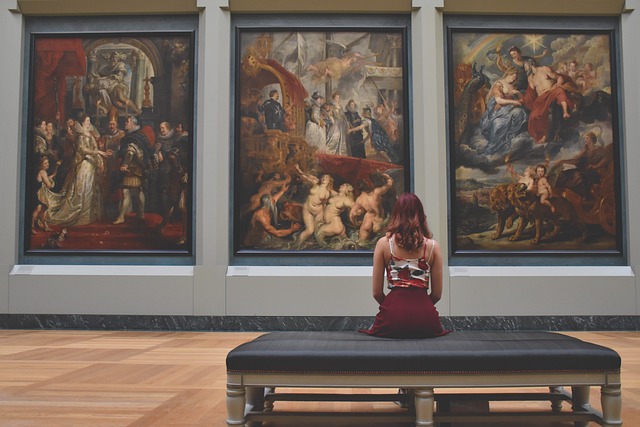From Art to Artifact: The Evolution of Tour Museum Offerings
The journey through human creativity and heritage is often encapsulated within the walls of a museum. Once seen merely as storied repositories of art and history, museums have transformed into dynamic institutions that engage the public in novel ways. This evolution from static displays of artifacts to immersive learning environments reflects broader cultural shifts and technological advancements that have redefined how we think about our past, understand arts, and appreciate heritage. This article explores this transformation, examining how museums have broadened their offerings to create more engaging, informative, and meaningful experiences for visitors.
The Traditional Museum Model
For centuries, museums served primarily as collections of artifacts and artworks, providing a space where visitors could appreciate the aesthetic and historical significance of objects. Traditional models focused on four main characteristics:
- Preservation: The primary aim was to preserve art and artifacts, ensuring they remained intact for future generations.
- Display: Curators arranged collections based on various criteria such as time period, artist, or material.
- Education: Although educational programs existed, they often took a secondary role, focused on lectures or guided tours that provided limited interaction.
- Exclusivity: Many museums catered to specific audiences, often alienating casual visitors or those unfamiliar with the subject matter.
This traditional model was effective in its time but neglects the broader community aspect that modern society demands. As cultural narratives evolved, so too did the expectations regarding museum engagement.
Shifting Paradigms: Cultural Inclusivity and Diversity
One of the most significant shifts in museum offerings has been the embrace of cultural inclusivity and the recognition of diverse narratives. In an increasingly globalized world, understanding varied perspectives is essential. Historical narratives, once predominantly told from a Eurocentric viewpoint, have gradually given way to more inclusive practices.
Museums are now actively seeking collaboration with marginalized communities, enabling them to share their stories through exhibitions and programs. This change has led to greater representation of Indigenous histories, immigrant stories, and more diverse cultural artifacts. These collaborations not only democratize knowledge but also foster a deeper connection between communities and their heritage.
Interactive Experiences: Embracing Technology
As technology continues to advance, museums have taken significant steps to enhance visitor engagement through interactive experiences. No longer satisfied with passive observation, visitors seek to engage actively with the exhibits. As such, museums have incorporated a variety of technological tools to achieve this goal.
QR codes, augmented reality (AR), and virtual reality (VR) experiences allow visitors to interact with exhibits in unprecedented ways. For example, AR applications enable visitors to use their smartphones or tablets to view additional information, animations, or supplementary historical context, making the artifacts come alive. VR experiences, on the other hand, can transport visitors to different eras or locations, enriching the storytelling aspect of the exhibition.
Moreover, hands-on workshops and interactive stations encourage participation, allowing visitors to create, build, or simulate aspects of the exhibits they are exploring. The combination of technology and interactivity fosters a deeper understanding and retention of knowledge, making the museum experience more memorable.
Storytelling: Personalizing the Museum Experience
Closely linked to the increase in interactivity is the rise of storytelling as a methodology in museums. Curators are recognizing that facts and figures alone do not resonate with visitors on a personal level. Instead, weaving narratives around artifacts creates a compelling emotional connection and makes history relatable.
Exhibitions increasingly adopt thematic storytelling approaches, drawing on personal testimonies, oral histories, and multimedia presentations. This method conveys the human experience behind the objects, inviting visitors to engage with history not just as spectators, but as participants in a shared human journey.
Sustainability and Environmental Awareness
As global consciousness around sustainability grows, museums have begun to reflect these values in their programming and operations. From incorporating green practices in their facilities to focusing exhibitions on environmental themes, the evolution of museum offerings takes on a broader significance that aligns with contemporary societal challenges.
Exhibitions regarding climate change, conservation efforts, and sustainable histories not only inform visitors about pressing global issues but also encourage them to think critically about their roles as stewards of the planet. By integrating environmental awareness into their mission, museums can inspire audiences to foster a sense of responsibility towards the world around them.
Collaborative Communities: Museums as Spaces for Dialogue
Modern museums are increasingly becoming civic spaces that facilitate dialogue and social connections. Rather than acting solely as custodians of artifacts, they now aim to be forums for discussion on relevant social topics, including inequality, identity politics, and historical trauma. This redefined role plays a vital part in community engagement, allowing museums to foster a sense of identity and belonging within their local contexts.
Community-driven programs, such as workshops, forums, and cultural events, invite local voices to share their perspectives, enriching the museum’s narrative tapestry. By actively involving the public in discussions, museums can build bridges between different groups, fostering empathy and understanding.
Globalization and Virtual Accessibility
The rise of the internet has propelled museums into the digital age, breaking down geographical barriers and expanding accessibility. Online exhibitions, educational resources, and virtual tours democratize access to art and culture, allowing global audiences to engage with collections that might otherwise be out of reach.
This digital evolution has taken on new importance in light of recent global events, including the COVID-19 pandemic, which necessitated the closure of many physical spaces. Many museums rapidly adapted by creating virtual experiences, reaching audiences who may never have visited in person. The flexibility of online platforms has encouraged institutions to think outside the box, reimagining what a museum can be in an increasingly interconnected world.
The Future of Museum Offerings
The landscape of museums is continuously evolving in response to societal needs, technological advancements, and shifting cultural attitudes. The future promises further innovation in how museums will engage and educate. Institutions may increasingly develop mixed-reality experiences that blend physical and virtual elements, creating hybrid spaces where art and technology coalesce seamlessly.
Moreover, the commitment to decolonizing museum practices will likely expand, as institutions continue to interrogate their roles within the broader socio-political landscape. This includes not only diversifying collections but also reimagining narratives to reflect a more inclusive array of perspectives and experiences.
As museums look forward, the emphasis will remain firmly on community engagement and participation. The narrative of a museum as solely a space for passive observation will be replaced by a vision of active collaboration, where visitors contribute to the stories being told. This participatory model strengthens communal ties, enhances cultural understanding, and reaffirms the museum’s role as a vital part of civic life.
Conclusion
The evolution of museum offerings represents a fundamental shift in how society values art, history, and heritage. No longer mere containers of artifacts, museums are evolving into vibrant spaces that inspire, challenge, and engage. As they continue to embrace inclusivity, interactivity, and innovation, museums promise to be more than just places to view art—they will become platforms for dialogue, learning, and community-building, enriching the human experience for generations to come.


